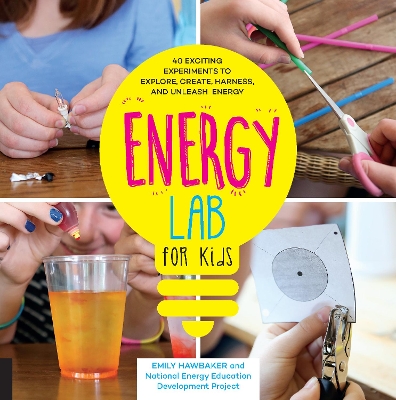Reviewed by annieb123 on
I really love seeing science books aimed at younger audiences with fun (safe!) experiments which encourage kids to explore and reason and learn while having fun. I could definitely see these experiments being used in a classroom setting or as part of a homeschooling unit.
At the beginning of the book, before the experiment sections is a general intro with safety information as well as an encouragement to keep notes in a lab notebook (and refer back to them). There is also a link for downloading the lab charts which appear in the book.
The lab experiments are arranged in 5 sections with labs which explain and support each concept. The five sections are: Energy basics, Forms of Energy and Energy Transformations, Renewable and Non-Renewable Energy Sources, Using Energy, and Saving Energy.
Each of the 40 lab experiments begin with ingredients list and safety notes. The labs are very well illustrated with numerous photographs. They support the section concepts very well with items which are easily found or acquired.
The end of the book has a good resource section with a list of websites for additional information and research as well as a short author bio and a little info on the NEED (national energy education development) project.
Four stars
Disclosure: I received an ARC at no cost from the author/publisher.
Reading updates
- Started reading
- 12 August, 2017: Finished reading
- 12 August, 2017: Reviewed
